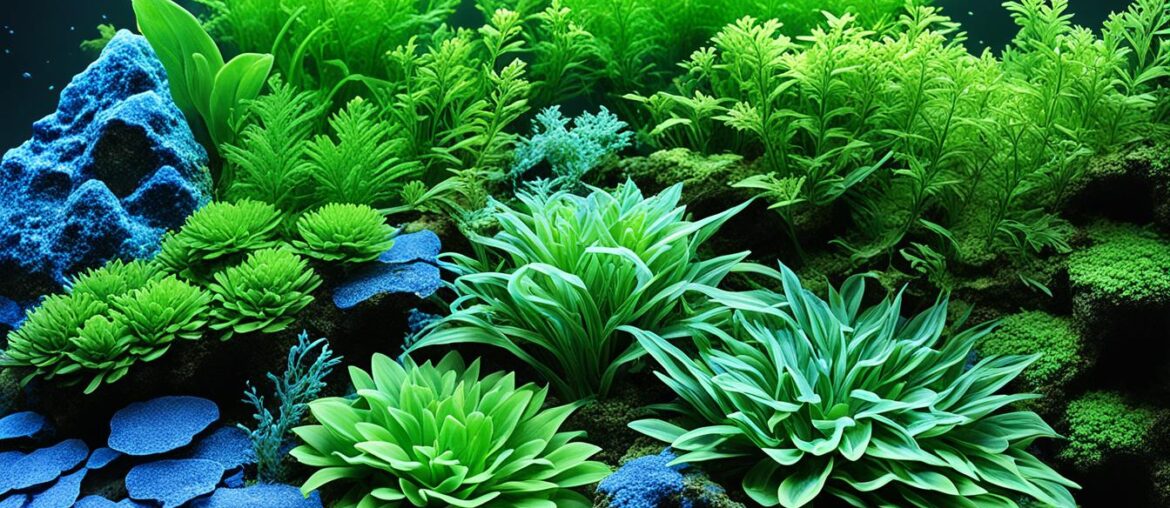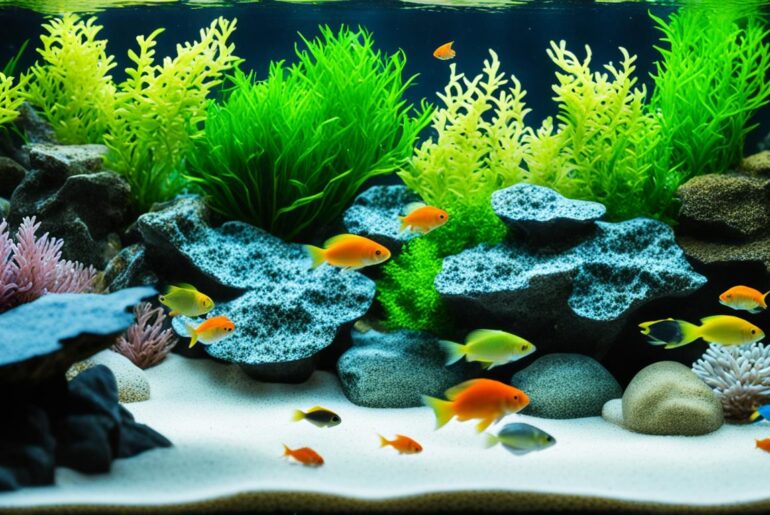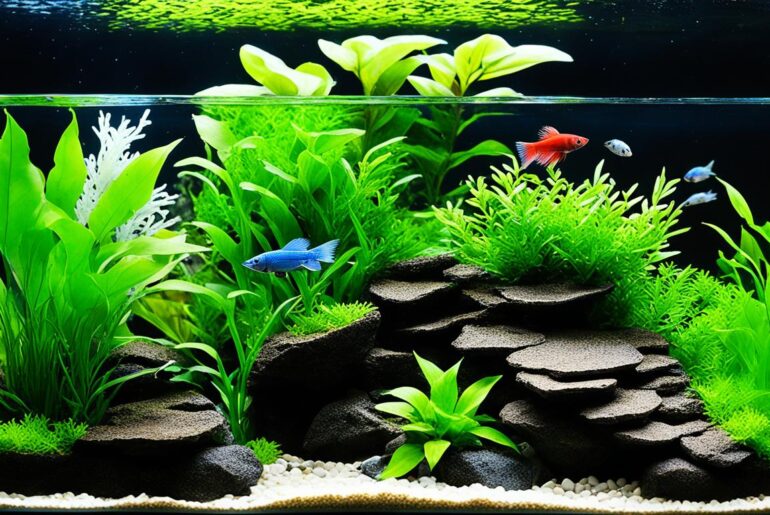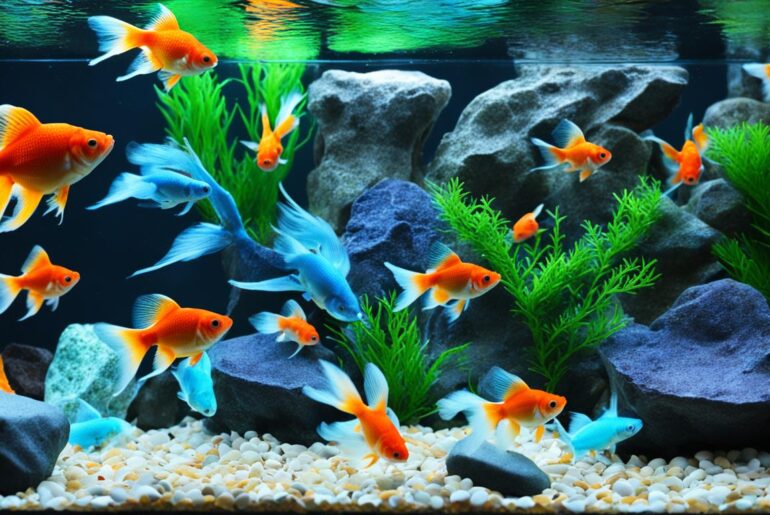Have you ever noticed how temperature influences the world around us? It’s fascinating how something as simple as a change in temperature can have a profound impact on living organisms, including those found in freshwater tank substrates. As an avid aquarium enthusiast, I have witnessed firsthand the transformative effects of temperature on these delicate ecosystems.
Imagine the joy of setting up a beautiful freshwater tank, carefully selecting the perfect substrate to create a natural and aesthetically pleasing environment for your aquatic plants and fish. Everything seems perfect until the temperature starts to fluctuate. Suddenly, you notice changes in the shape and condition of your substrate.
These shifts in shape and condition are not mere coincidences. They are the result of temperature’s direct influence on the structure and stability of freshwater tank substrates. When the heat rises or falls beyond the tolerable limits, the substrates may experience thermal stress, leading to their deterioration and the potential disruption of the entire aquatic ecosystem.
Understanding the intricate relationship between temperature and freshwater tank substrates is vital for maintaining a thriving aquatic environment. In this article, we will delve into the fascinating world of temperature effects on freshwater tank substrates, exploring the consequences of heat tolerance, sensitivity, and thermal stress. Join me on this journey as we unravel the secrets of substrate temperature regulation in fish tanks.
Key Takeaways:
- Temperature plays a crucial role in shaping the condition of freshwater tank substrates.
- Excessive heat or cold can lead to thermal stress and deterioration of substrates.
- Understanding the heat tolerance and sensitivity of substrates is essential for maintaining a healthy aquatic environment.
- Proper temperature regulation is key to optimizing substrate health and ensuring the well-being of aquatic organisms.
- By carefully monitoring and adjusting temperature conditions, you can create a visually appealing and thriving freshwater tank.
Can Aquarium Plants Survive in Cooler Water?
Many aquarium plants come from tropical areas and are commonly associated with warm water conditions. However, these plants are surprisingly adaptable and can also survive in cooler water temperatures. In their natural habitats, aquatic plants experience fluctuations in water level and temperature, ranging from being completely submerged to partially exposed to air. This natural variability allows them to thrive in different temperature ranges and adapt to their environment.
While each plant has its own set of ideal conditions, it is generally safe to say that most aquarium plants can survive in cool water temperatures. A temperature range of 70°F-72°F (21°C-22°C) is considered suitable for many aquatic plants. This range provides a comfortable environment for their growth and propagation, even if it is slightly cooler than their native tropical regions.
Despite the cooler temperature, these plants can still flourish in your aquarium. Their ability to adapt to varying water temperatures is a testament to their resilience and evolutionary mechanisms. So if you’re concerned about whether your aquarium plants will survive in cooler water, rest assured that they have the capacity to thrive under these conditions.
Aquatic Plant Adaptations to Temperature Fluctuations
Aquatic plants have evolved physiological adaptations that enable them to survive in different temperature ranges. These adaptations help them cope with fluctuations in their environment and ensure their growth and survival. Some of these adaptations include:
- Metabolic Flexibility: Aquatic plants can adjust their metabolic processes and energy utilization based on temperature variations. This flexibility allows them to maintain consistent growth and optimize resource utilization even in cooler water.
- Fluctuation Tolerance: By experiencing fluctuations in water level and temperature, aquatic plants have developed tolerance to changing conditions. They can withstand brief periods of cooler water and remain healthy and vibrant.
- Temperature-Dependent Growth Rates: Cooler water temperatures often result in slightly slower growth rates for aquatic plants. While they may not grow as quickly as in warm water, they can still thrive and contribute to the overall aesthetics of your aquarium.
With proper care and maintenance, including appropriate lighting, fertilization, and water quality management, your aquarium plants can flourish in cooler water. Remember to choose plant species that are more resilient to cooler temperatures to ensure their long-term success in your aquarium.
The Effect of Temperature on Plant Growth and Planted Tanks
Temperature plays a crucial role in the growth and development of aquarium plants. It significantly impacts their metabolic rate, which in turn affects their growth rate. Warmer temperatures can accelerate the metabolic rate of plants, leading to faster growth. However, it is important to note that excessive heat can be detrimental to plant health, causing stress and potentially hampering their growth potential.
In addition to influencing the metabolic rate, temperature also impacts other essential processes in aquarium plants. For example, it affects the uptake of nutrients and carbon dioxide (CO2). High temperatures can increase the demand for resources such as CO2 and nutrients, making it essential to ensure that plants receive adequate supplementation to support their growth.
When aquarium plants are subjected to warmer conditions, they may exhibit more compact growth due to accelerated flowering. While compact growth can be visually appealing and result in lush greenery, it may also alter the plant’s overall shape and size. Aquarists should consider the specific temperature preferences of the plants in their tank and make adjustments to CO2 injection and fertilizer application accordingly to maintain optimal growth and health.
To achieve a vibrant and thriving planted tank, proper temperature regulation is crucial. Each species of aquarium plant has its own temperature preferences, so it is important to research and understand the specific needs of the plants in your tank. By providing the right temperature, nutrients, and CO2 levels, you can create an environment that supports the growth and propagation of your aquarium plants.
Example Plants and Their Temperature Preferences:
| Plant | Temperature Range |
|---|---|
| Anubias | 72°F – 82°F (22°C – 28°C) |
| Java Fern | 68°F – 82°F (20°C – 28°C) |
| Dwarf Hairgrass | 68°F – 75°F (20°C – 24°C) |
Each of these plants has different temperature preferences, highlighting the importance of considering the specific needs of your aquarium plants. By ensuring the right temperature conditions, you can promote healthy growth, vibrant colors, and maintain a visually pleasing and well-maintained planted tank.

With proper temperature regulation and a focus on providing the necessary resources, maintaining a planted aquarium can be a rewarding experience. By understanding the effect of temperature on plant growth and taking appropriate measures to support your plants’ needs, you can create a thriving aquatic environment that showcases the beauty of aquatic flora.
Cool vs. Warm: Optimal Temperature for Substrate Health
When it comes to the optimal temperature for substrate health in planted tanks, the debate between cool water and warm water continues. While aquatic plants can tolerate a wide range of temperatures, ranging from cool to warm, finding the sweet spot is essential for promoting their growth and overall well-being.
Many aquarium plants, including popular species like Anubias, Java Fern, and Cryptocoryne, can thrive in temperatures ranging from the low 70s to the mid-80s. However, studies and experiences from aquarists have shown that these plants generally thrive in cooler water conditions.
What makes cooler water conditions beneficial for substrate health? Cooler water provides a more stable metabolic rate, which allows plants to carry out essential biochemical reactions at an optimal pace. This stability also reduces the demand for CO2 and nutrient uptake, making it easier to maintain a well-balanced planted tank.
“Cooler water provides a more stable metabolic rate for plants and reduces their demand for CO2 and nutrient uptake.”
In addition to stable metabolic rates, cooler water can hold higher concentrations of essential dissolved gases such as CO2 and oxygen. This abundance of dissolved gases is crucial for ensuring healthy plant growth and promoting the overall well-being of livestock in the tank.
If you’re aiming to create a planted tank with optimal substrate health, consider setting the temperature between 70F-74F (21C-23C). This temperature range provides a balance between plant growth and the well-being of other tank inhabitants, such as freshwater shrimp that are known for their algae-eating capabilities.
| Temperature Range | Benefits |
|---|---|
| Cool Water (70F-74F / 21C-23C) |
|
| Warm water (mid-70s to mid-80s / 24C-29C) |
|
To summarize, while aquatic plants can survive in a range of temperatures, cool water conditions typically offer greater benefits for optimal substrate health. Cooler water provides a stable metabolic rate, reduces the demand for CO2 and nutrient uptake, and supports higher concentrations of essential dissolved gases. By setting the temperature between 70F-74F (21C-23C), you can create a suitable environment for your aquatic plants to thrive and promote a visually appealing and healthy planted tank.
Temperature Effects on Freshwater Tank Substrates: A Comprehensive Perspective
When it comes to maintaining a healthy aquarium environment, understanding the temperature effects on freshwater tank substrates is crucial. These effects encompass various aspects, including heat stress, thermal stress, heat tolerance, sensitivity, and temperature regulation. By comprehending and managing these factors, aquarists can optimize the health and condition of their tank substrates, ensuring the well-being of aquatic organisms.
Heat stress and thermal stress can have negative impacts on the shape and condition of freshwater tank substrates. When exposed to high temperatures, these substrates may experience structural deterioration, leading to potential damage. It is essential to monitor and regulate the temperature to prevent such stress and maintain the integrity of the substrates.
Heat tolerance and sensitivity vary among different types of substrates. Some substrates perform better in cooler water temperatures, while others thrive in warmer water conditions. It is beneficial to understand the specific temperature preferences of the substrates used in your aquarium to provide the ideal environment for their growth and stability.
Proper temperature regulation in the aquarium is essential for optimizing substrate health. Maintaining a consistent and suitable temperature range ensures that the substrates can function optimally and create an ideal habitat for aquatic organisms. Regular monitoring of water temperature and making adjustments as needed is key to achieving this balance.
In conclusion, comprehending the temperature effects on freshwater tank substrates is vital for creating a thriving aquatic environment. By managing heat stress, understanding heat tolerance and sensitivity, and regulating temperature effectively, aquarists can promote the health and longevity of their tank substrates, ultimately enhancing the overall well-being of their aquarium environment.
Continue reading to explore the physiological adaptations of freshwater tank substrates to temperature changes in the following section.
Physiological Adaptations of Freshwater Tank Substrates to Temperature
Freshwater tank substrates possess remarkable physiological adaptations that enable them to withstand and thrive in varying temperature conditions. These adaptations play a crucial role in their ability to tolerate different temperature ranges and maintain their metabolic processes. Temperature variations trigger a series of changes in freshwater tank substrates, affecting nutrient uptake, oxygen availability, and photosynthesis rates, ultimately influencing their growth and overall health.
One of the key physiological adaptations is the adjustment of nutrient uptake. Freshwater tank substrates have the ability to regulate nutrient absorption based on temperature. As temperatures fluctuate, the substrates modulate their nutrient uptake to ensure optimal growth and development. This adaptive response allows them to optimize their nutrient utilization and maintain a healthy nutrient balance.
Oxygen availability is another vital aspect influenced by temperature. Freshwater tank substrates adapt to temperature changes by adjusting their oxygen demand. In warmer temperatures, substrates can actively increase their oxygen uptake to meet the higher metabolic demands caused by accelerated growth. Conversely, in cooler temperatures, substrates may selectively reduce their oxygen demand to conserve energy and adapt to a slower metabolic rate.
Additionally, temperature variations affect the rate of photosynthesis in freshwater tank substrates. These organisms adjust their photosynthetic activity based on temperature fluctuations, optimizing their energy production in response to changing environmental conditions. By regulating the rate of photosynthesis, substrates can efficiently utilize available light and ensure sufficient energy for growth and metabolic processes.
To promote a thriving aquatic environment, it is crucial for aquarists to understand these physiological adaptations of freshwater tank substrates. By providing optimal temperature conditions, aquarists can create an environment that supports the growth, health, and overall well-being of the substrates. Maintaining a balanced and suitable temperature range enhances nutrient uptake, oxygen availability, and photosynthetic activity, enabling the substrates to flourish within the aquarium.
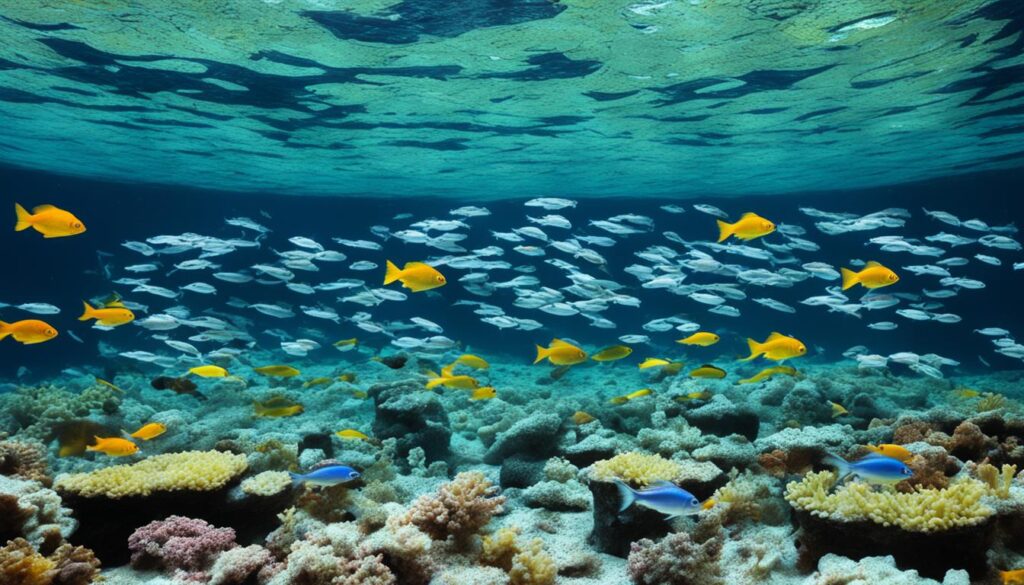
The Role of Nervous Systems in Temperature Adaptation of Freshwater Tank Substrates
The nervous systems of freshwater tank substrates play a vital role in their adaptation to temperature changes. As the temperature fluctuates, these intelligent systems trigger physiological responses that help the substrates cope with thermal stress and regulate their internal temperature. Through intricate neural pathways and chemical signaling, the nervous systems of freshwater tank substrates enable them to maintain their health and functionality in varying temperature conditions.
One key physiological response controlled by the nervous systems is the adjustment of the metabolic rate. When exposed to higher temperatures, the nervous systems increase the metabolic rate of the substrates, promoting faster chemical reactions and energy production. This adaptation allows the substrates to thrive in warmer environments where their metabolic demands are higher.
Additionally, the nervous systems of freshwater tank substrates contribute to temperature regulation within their cells and tissues. They help maintain homeostasis by controlling heat distribution and dissipating excess thermal energy. This regulation ensures that the substrates do not experience detrimental effects from extreme temperature changes.
Overall, the nervous systems of freshwater tank substrates are remarkable adaptations that enable them to survive and thrive in different temperature conditions. By understanding the role of nervous systems in temperature adaptation, aquarists can provide optimal temperature conditions and ensure the well-being of these substrates in their aquatic environments.
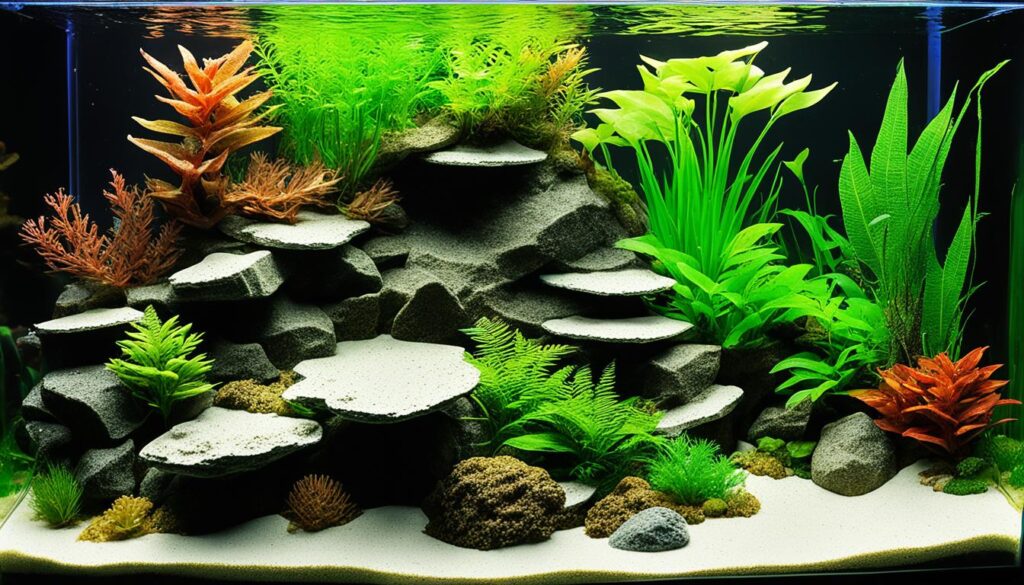
Comparative Physiology of Freshwater Tank Substrates in Response to Temperature
The comparative physiology of freshwater tank substrates provides valuable insights into their response to temperature variations. Understanding how these substrates adapt to different temperature conditions is essential for optimizing their growth and development. Key factors in this adaptation include energy metabolism, thermal tolerance, and physiological adaptations.
Energy metabolism plays a crucial role in substrate health and growth. As temperatures fluctuate, substrates undergo changes in metabolic rate and energy utilization, allowing them to maintain their physiological functions. These metabolic changes enable substrates to effectively process nutrients and support essential processes for growth and development.
Thermal tolerance is another critical aspect of comparative physiology in freshwater tank substrates. Different substrates exhibit varying levels of thermal tolerance, determining their ability to withstand temperature extremes and thermal stress. By understanding the thermal tolerance of different substrates, aquarists can provide optimal temperature conditions that promote substrate health and prevent deterioration.
Physiological adaptations further contribute to the resilience and adaptability of freshwater tank substrates to temperature changes. These adaptations include changes in metabolic rate, energy utilization, and other physiological processes. By studying these adaptations, we can gain a deeper understanding of how substrates respond to temperature variations and develop strategies to optimize their conditions.
| Comparative Physiology Factors | Implications for Substrate Health and Growth |
|---|---|
| Energy Metabolism | Optimized nutrient processing and resource utilization |
| Thermal Tolerance | Ability to withstand temperature extremes without deteriorating |
| Physiological Adaptations | Enhanced resilience and adaptability to temperature changes |
By studying the comparative physiology of freshwater tank substrates, we can make informed decisions regarding temperature regulation and create optimal conditions for their growth and development. This knowledge empowers aquarists to foster a thriving aquatic environment and ensure the well-being of their freshwater tank substrates.

The Impact of Temperature on Feed Intake and Digestive Physiology of Freshwater Tank Substrates
Temperature plays a crucial role in the feed intake and digestive physiology of freshwater tank substrates. These substrates, which include plants and organisms, react to temperature changes by adjusting their metabolic rate and appetite control.
In cooler water temperatures, freshwater tank substrates may experience reduced feed intake and slower digestion. The lower temperature slows down their metabolic processes, leading to a decrease in appetite and a slower breakdown of food. On the other hand, warmer water temperatures can increase appetite and metabolic rate in these substrates, resulting in higher feed intake and faster digestion.
Understanding the impact of temperature on feed intake and digestive physiology is essential for providing appropriate nutrition and maintaining the overall health of freshwater tank substrates. By closely monitoring and regulating the temperature in the tank, aquarists can optimize the feeding schedule and ensure that the substrates receive the right amount of food to support their growth and well-being.
“The temperature of the water in a freshwater tank directly affects the appetite and digestion of its substrates. Cooler temperatures cause reduced feed intake and slower digestion, while warmer temperatures can increase appetite and metabolic rate.”
Proper temperature control is crucial for maintaining a balanced environment in the tank. It is recommended to follow the temperature preferences of the specific substrates present in the tank and adjust the temperature accordingly. By providing the optimal temperature range for their feed intake and digestive processes, aquarists can support the metabolism and appetite control of their freshwater tank substrates, ensuring their overall health and vitality.
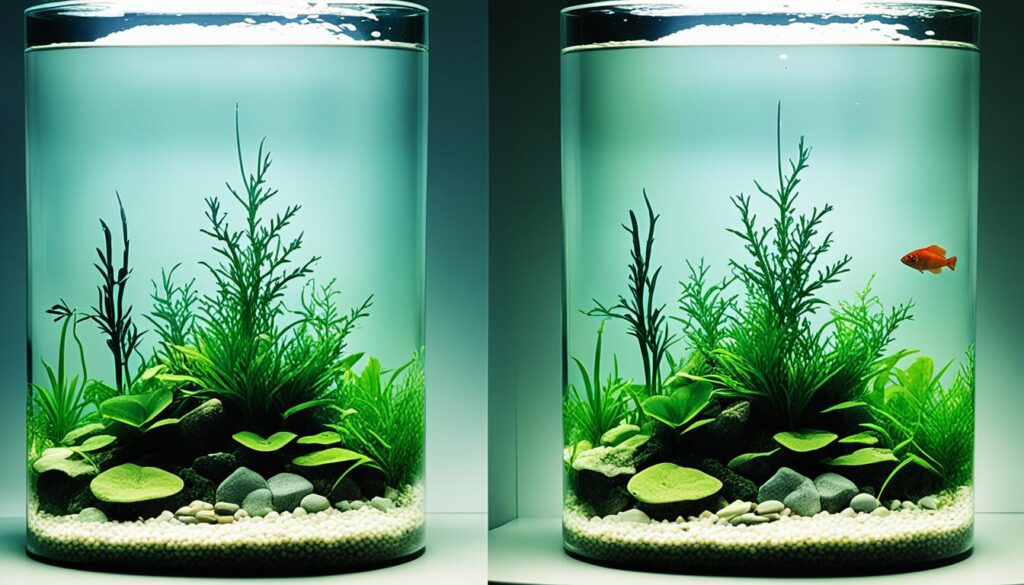
Temperature Effects on Feed Intake and Digestive Physiology
| Temperature | Feed Intake | Digestive Physiology |
|---|---|---|
| Cooler Temperatures | Reduced | Slower digestion |
| Warmer Temperatures | Increased | Faster digestion |
The Trade-off Between Temperature and Growth in Freshwater Tank Substrates
When it comes to freshwater tank substrates, there is a delicate trade-off between temperature and growth. Finding the right balance is crucial for maintaining the health and thriving ecosystem of your aquarium. Let’s explore this trade-off and understand its significance.
Optimal temperature conditions play a pivotal role in promoting the growth of freshwater tank substrates. These conditions provide an ideal environment for the substrates to flourish, ensuring robust development and vitality. However, temperature extremes can have adverse effects on their growth.
When substrates are exposed to temperature conditions that surpass their metabolic scope and physiological limits, negative consequences can occur. These extremes can strain their ability to perform vital functions, impeding growth and potentially leading to deterioration in their overall health.
Understanding this trade-off between temperature and growth is crucial for maintaining a healthy balance. By providing optimal temperature conditions within the physiological limits of freshwater tank substrates, you can ensure their well-being and promote optimal growth.
The Importance of Temperature Regulation
Temperature regulation is vital for freshwater tank substrates to remain within their physiological limits and avoid detrimental effects. It is essential to monitor and maintain suitable temperature ranges to support the growth and overall health of your aquarium.
Recommended Temperature Ranges
While specific temperature requirements may vary depending on the type of substrate and aquatic organisms in your tank, there are general temperature ranges that are conducive to growth. Here are some recommended temperature ranges for common freshwater tank substrates:
| Substrate | Recommended Temperature Range |
|---|---|
| Substrate A | 60°F – 75°F (15.6°C – 23.9°C) |
| Substrate B | 65°F – 80°F (18.3°C – 26.7°C) |
| Substrate C | 70°F – 85°F (21.1°C – 29.4°C) |
These temperature ranges provide a balance between optimal growth and the physiological limits of the respective substrates. However, it is crucial to research and understand the specific temperature requirements of the substrates in your aquarium to ensure their well-being and promote healthy growth.
Striking the Right Balance
Successfully managing the trade-off between temperature and growth in freshwater tank substrates requires careful observation and adjustment. Regularly monitoring the temperature of your aquarium and implementing appropriate measures, such as using a heater or chiller, is essential for maintaining a stable environment.
Additionally, consider the temperature preferences of the aquatic organisms coexisting with the substrates. Strive for a harmonious balance that accommodates the needs of all inhabitants while supporting optimal growth for the substrates.
Remember, maintaining an appropriate temperature is just one aspect of providing ideal conditions for freshwater tank substrates. Proper care, adequate lighting, and optimal water quality are equally vital for their overall health and development.
By understanding and managing the trade-off between temperature and growth, you can create a thriving ecosystem within your aquarium that promotes the well-being of your freshwater tank substrates.
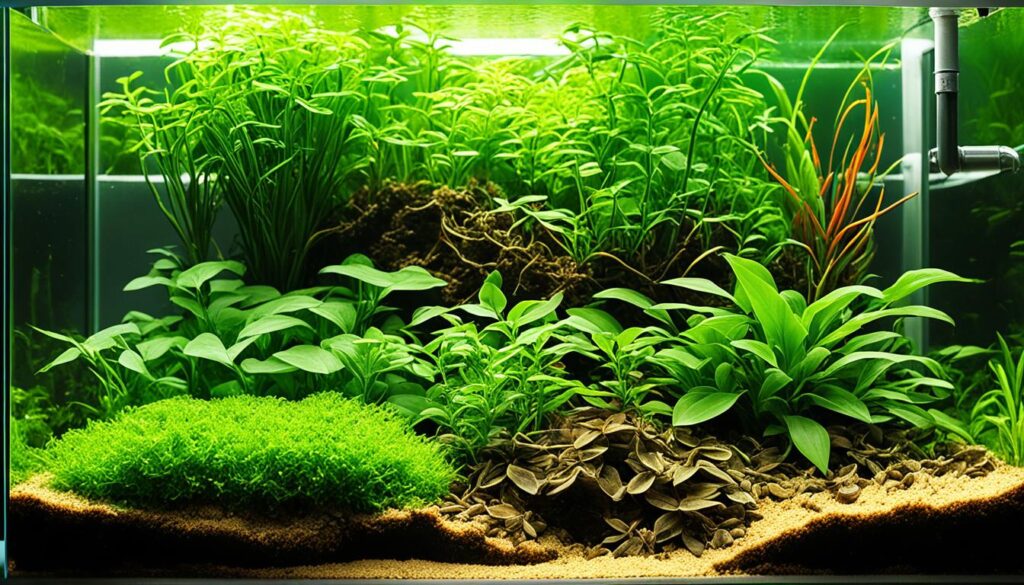
Conclusion
In conclusion, temperature is a critical factor that directly influences the shape and overall health of freshwater tank substrates. By understanding the various effects of temperature, such as heat stress, thermal stress, temperature tolerance, and physiological adaptations, aquarists can create optimal conditions in their aquarium environments.
Regulating temperature carefully and providing suitable conditions not only promotes the growth and well-being of freshwater tank substrates, but also creates a visually appealing and thriving aquatic environment. By maintaining a balance and ensuring that substrates remain within their physiological limits, aquarists can provide the best possible conditions for their aquatic organisms.
Ultimately, with a clear understanding of the impact of temperature on freshwater tank substrates, aquarists can create an environment that supports healthy growth and a vibrant aquatic ecosystem. By paying attention to temperature regulation, aquarists can enjoy the beauty of their underwater landscapes while ensuring the well-being and longevity of their freshwater tank substrates.
FAQ
How does temperature affect the shape of freshwater tank substrates?
Temperature can have a significant impact on the shape of freshwater tank substrates. Extreme heat or thermal stress can cause substrates to deteriorate, negatively affecting their overall condition.
Can aquarium plants survive in cooler water?
Yes, aquarium plants can survive in cooler water temperatures. While many plants come from tropical areas and can thrive in warmer conditions, they are also capable of surviving in cooler temperatures.
How does temperature affect plant growth and planted tanks?
Temperature significantly influences the growth of aquarium plants. Heat increases their metabolic rate and can accelerate growth. However, excessive heat can be detrimental to plant health, and adjustments in CO2 injection and nutrient application may be necessary to maintain a thriving planted tank.
What is the optimal temperature range for substrate health?
Cool water temperatures ranging from the low 70s (21C-24C) are generally optimal for substrate health. Cooler water provides a stable metabolic rate for plants and reduces their demand for CO2 and nutrient uptake. It also promotes the growth of freshwater shrimp, known for their algae-eating capabilities.
What are the effects of temperature on freshwater tank substrates?
Temperature effects on freshwater tank substrates include heat stress, thermal stress, heat tolerance, sensitivity, and temperature regulation. Understanding these effects is crucial for maintaining a healthy aquarium environment.
How do freshwater tank substrates adapt to temperature changes?
Freshwater tank substrates exhibit physiological adaptations to temperature changes, allowing them to tolerate different temperature ranges and maintain their metabolic processes. These adaptations impact their growth and overall health.
What is the role of nervous systems in temperature adaptation of freshwater tank substrates?
The nervous systems of freshwater tank substrates play a vital role in their adaptation to temperature changes. Physiological responses, such as changes in metabolic rate and temperature regulation, are controlled by their nervous systems.
How do freshwater tank substrates respond to temperature variations?
The comparative physiology of freshwater tank substrates provides insights into their response to temperature variations. Energy metabolism and thermal tolerance play a crucial role in their adaptation to different temperature conditions.
How does temperature impact the feed intake and digestive physiology of freshwater tank substrates?
Temperature affects the feed intake and digestive physiology of freshwater tank substrates. Cooler water temperatures can reduce feed intake and slow digestion, while warmer water temperatures may increase appetite and metabolic rate.
What is the trade-off between temperature and growth in freshwater tank substrates?
Freshwater tank substrates face a trade-off between temperature and growth. Optimal temperature conditions promote growth, while temperature extremes can push substrates beyond their metabolic scope and physiological limits.
